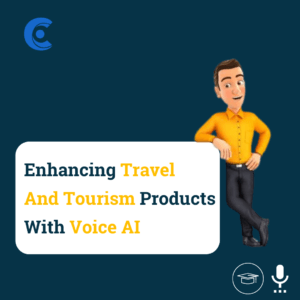Building user trust and adoption for travel and tourism products that use voice AI

Building user trust and adoption for travel and tourism products that utilize voice AI involves a combination of transparency, usability, personalization, and security. Here’s a step-by-step approach to achieving this:
1.Transparency in Data Usage and Privacy: Clearly communicate to users how their voice data will be used, stored, and protected. Provide a detailed privacy policy that outlines data handling practices, including encryption, anonymization, and limitations on data sharing with third parties. Gain explicit consent from users before collecting and utilizing their voice data.
2. Educational Content: Create content that educates users about the benefits and functionalities of voice AI in travel and tourism. Address any concerns they might have regarding privacy, security, and data usage. Offer FAQs, blog posts, and video tutorials to showcase the value of the technology while addressing potential reservations.
3. Enhanced User Experience: Focus on creating a seamless and user-friendly experience with voice AI. The technology should make travel-related tasks easier and more convenient, such as booking flights, hotels, or accessing local information. A positive user experience will encourage adoption and build trust.
4. Personalization and Customization: Tailor the voice AI interactions to each user’s preferences and needs. The more personalized and accurate the recommendations and information are, the more users will see the value in using the technology.
5. Data Security: Implement robust security measures to safeguard users’ voice data. Use encryption for data transmission and storage, regularly update security protocols, and conduct vulnerability assessments to prevent data breaches.
6. Real-time Assistance: Offer a human-assistance option alongside the voice AI. This can be especially useful in complex situations or when users prefer a human touch. The availability of human support fosters trust by demonstrating a commitment to meeting user needs.
7. Continuous Improvement: Regularly gather user feedback and iterate on the voice AI system based on their suggestions. Demonstrating that you are actively improving the technology based on user input helps build trust and shows that you value their opinions.
8. Social Proof and Testimonials: Showcase positive experiences from early adopters and travelers who have benefited from using the voice AI. User testimonials and case studies can serve as social proof and inspire confidence in potential users.
By following these steps and maintaining a user-centric approach, you can gradually build user trust and adoption for travel and tourism products that incorporate voice AI technology.
Unleash the potential of voice AI in the travel and tourism industry.
